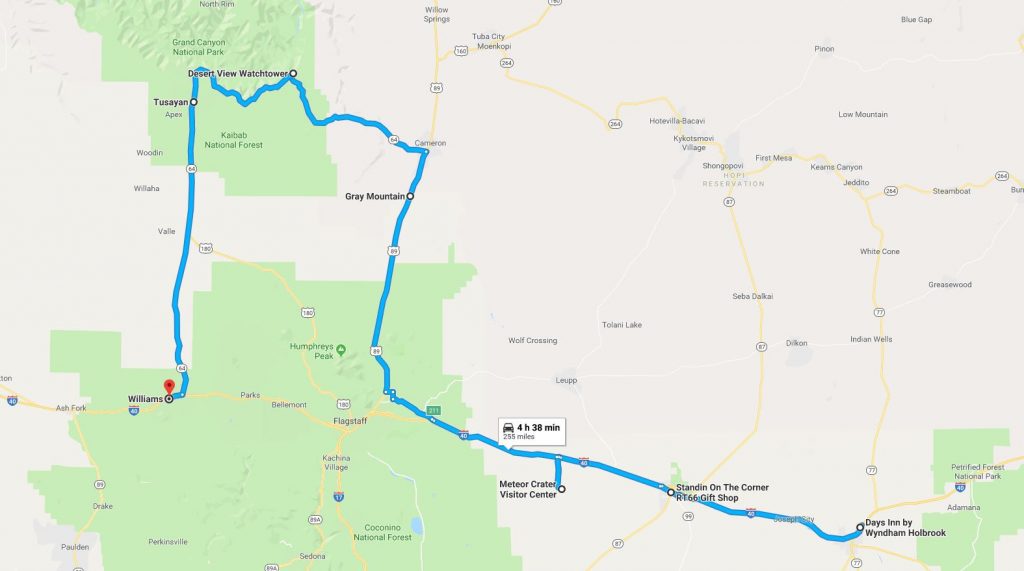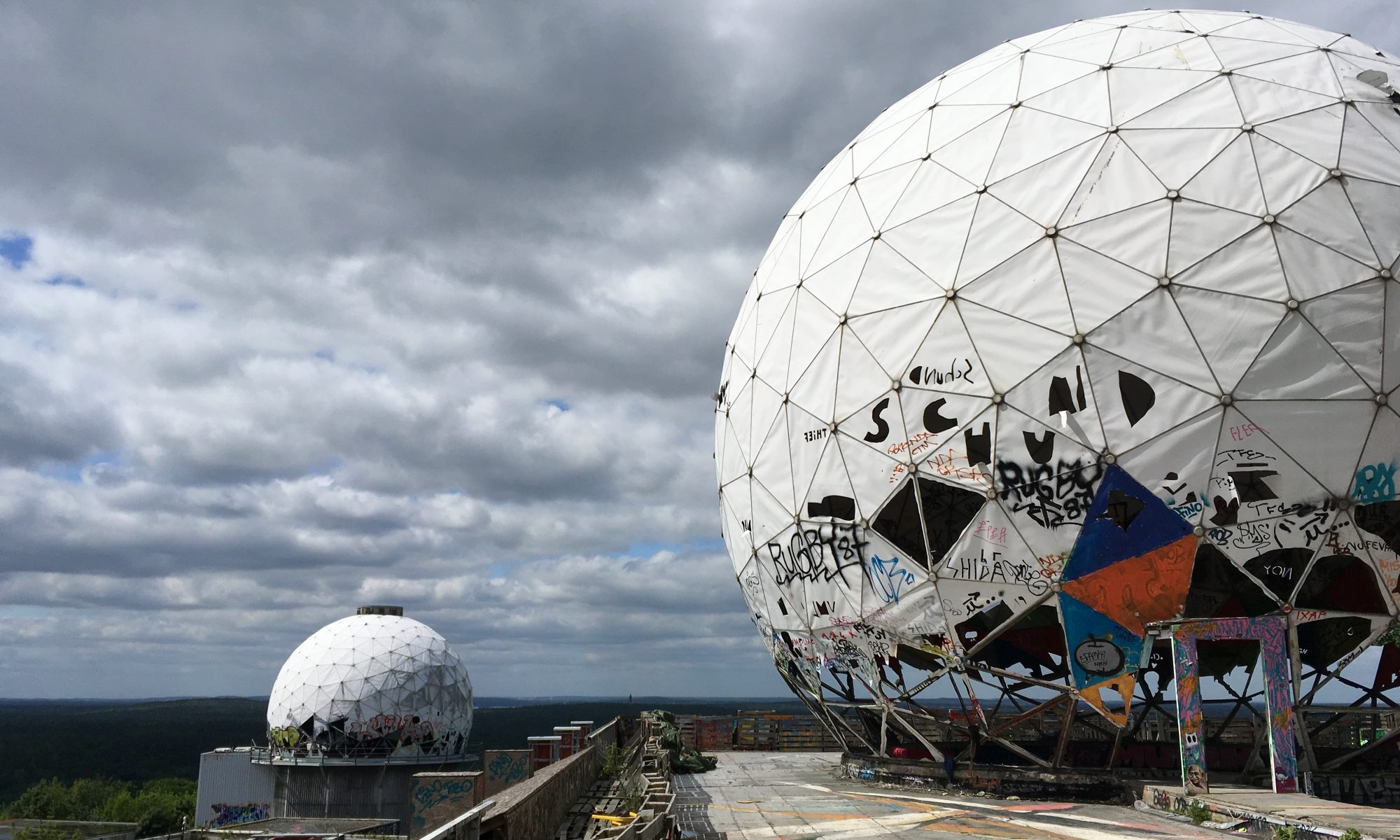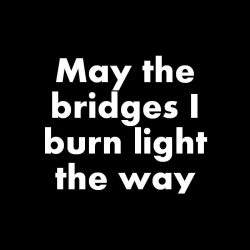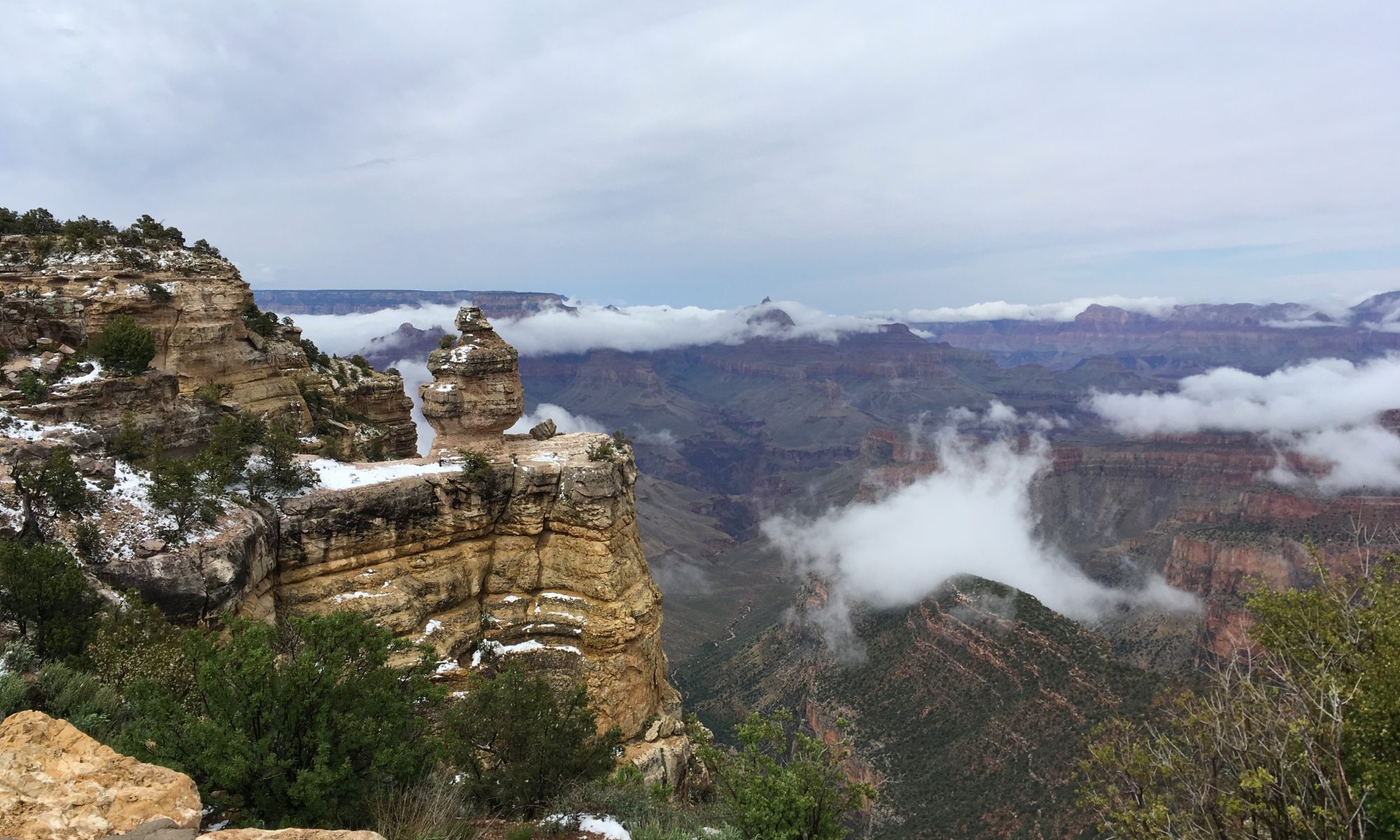The next morning we woke up to grey skies and drizzling rain. Shit!… Back into rain gear (which luckily had a chance to dry out over the past couple of days), and on the road again – we were still on schedule. I was hoping to experience Arizona in all its glory without any untoward weather phenomena, but seemed like this was not going to happen… In addition to the annoying drizzle, the dark thunderstorm clouds of yesterday were still loitering on the horizon… Just what one needs when crossing vast empty spaces on a motorbike!…
Standing on the Corner in Winslow, Arizona
We left Hollbrook at 08:30 and after just half an hour on the road, the drizzle turned into a torrential downpour. This was not fun. We had to stop. Luckily, the next point on our itinerary was just 30 something miles away. The town of Winslow, Arizona, not known for anything special before 1972, when one line from the Eagles’ hit “Take it Easy” skyrocketed the place to national and world fame. After that, badly hurt by the influx of business due to creation of the I-40 bypass, the town of less than 10,000 people did it’s best to capitalize in on that one line to the full. Standin’ on the Corner Park, consisting of a brick wall with faux windows, and a bronze figure of a man with a guitar standing on the corner of said wall and a flat-bed truck parked next to it, became the new main attraction of the place. In 2016, after the death of Grenn Frey, who co-authored the musical masterpiece, his statue was added to the park as well – leaning on a lamp post opposite the first dude. Without a guitar, though…
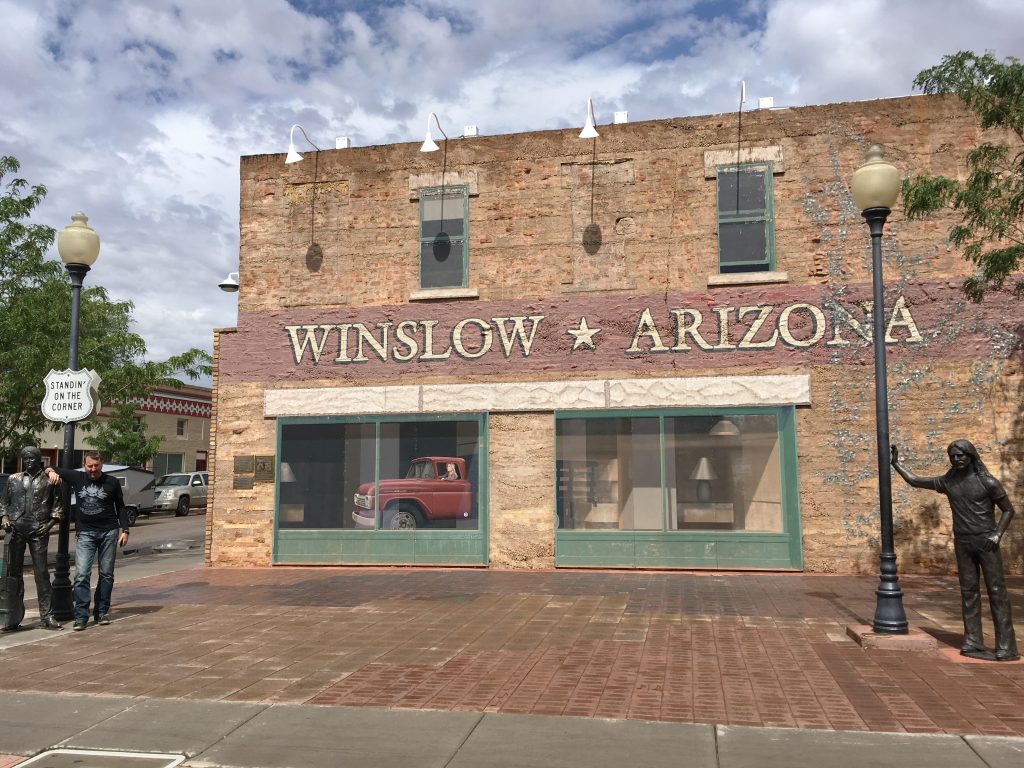
After a couple of wrong turns (in our defense, we could barely see the signs or even the road in the pouring rain), we saw The Corner. We parked our motorized sofas nearby, and dashed into the welcoming doors of the Sipp Shoppe café with a view – right across the Standin’ on the Corner Park. We could admire the local sights from inside a dry and warm environment, accompanied by delicious coffees and roast-beef sandwiches (breakfast!!!!), while buckets of rain were falling on the ground outside. We could even partially take off our rain gear, and not sit in the pools of water on the lovely stools of Sipp Shoppe. We sipped the lovely cappuccinos, enjoyed the roast-beef, and admired the view. I made quick random dashes outside to take photos, but after half an hour, the downpour turned into a drizzle, and eventually stopped altogether.
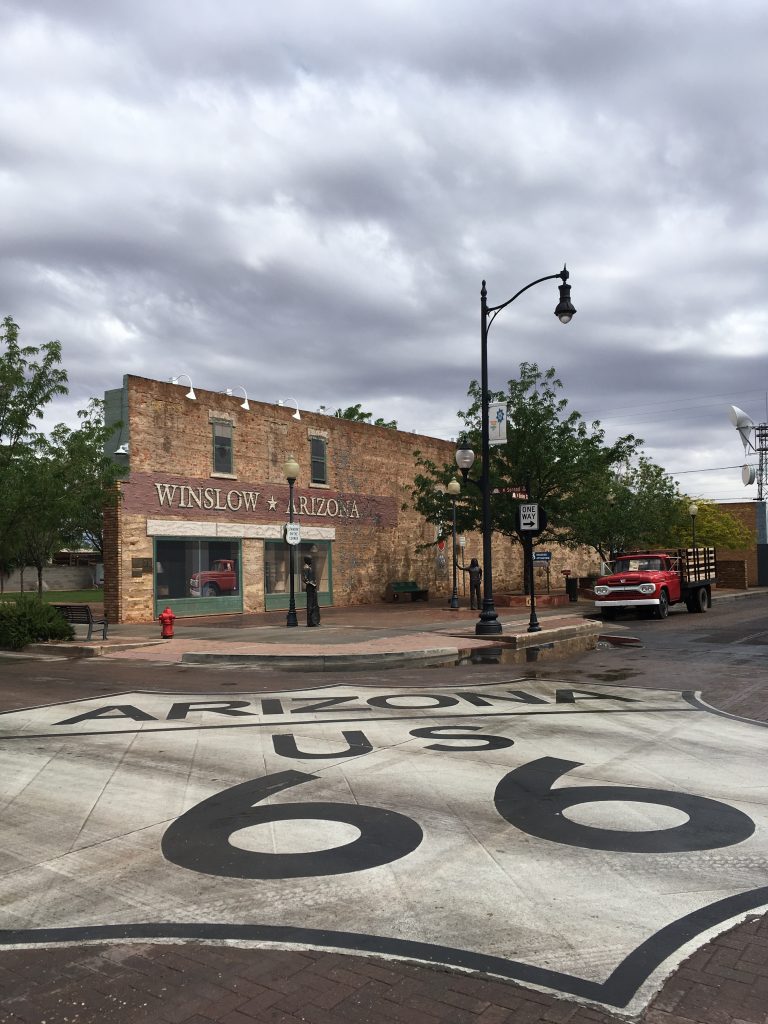
Perfect timing! We did a quick photo-session with The Corner, and suspiciously eyeing the heavy grey clouds, threatening to burst out with the next downpour, continued on our way.
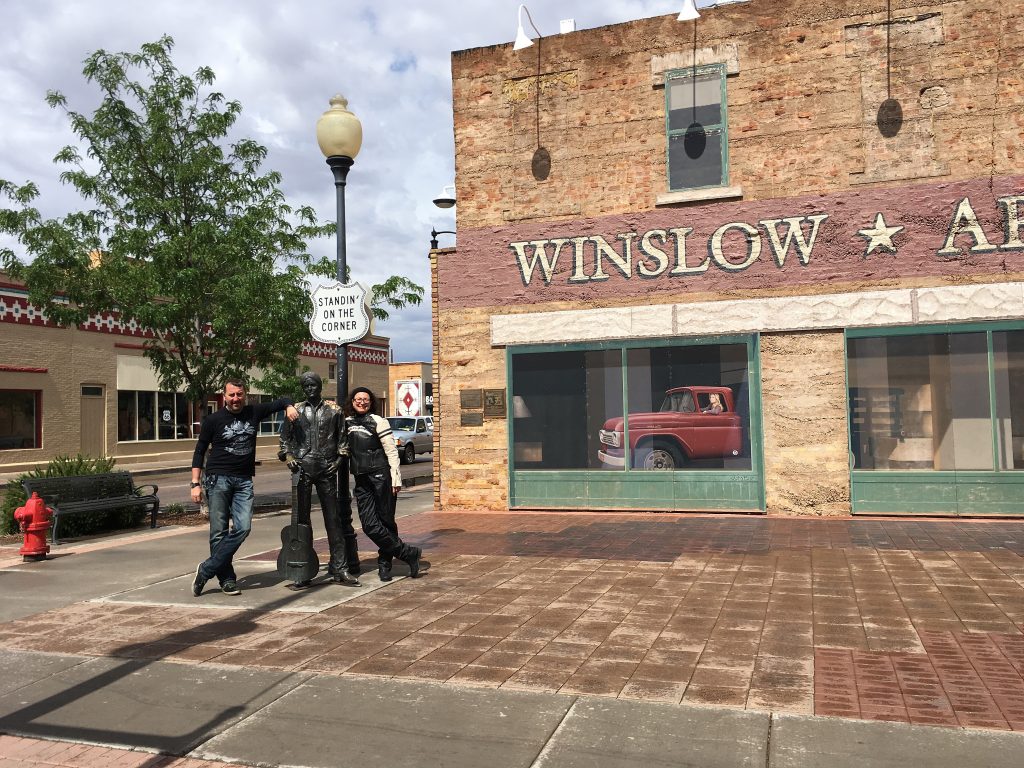

Meteor Crater
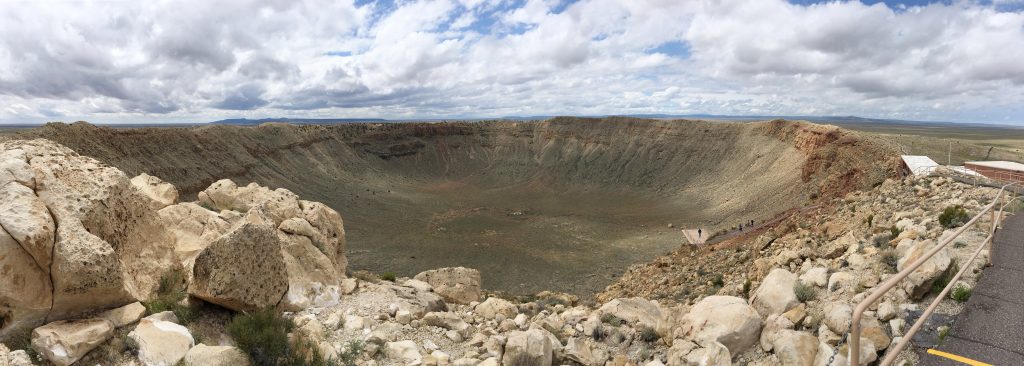
Next on the agenda – Meteor Crater, also known by a much more colorful name of a Canyon Diablo Crater, or a slightly more boring one of Barringer Meteorite Crater. Located just 30 minutes West off Winslow, it was a place I stumbled upon by pure chance during my mad Christmas dash from St. Louis to Nevada and back and fondly remembered ever since. Some 50,000 years ago, a meteor, relatively modest in size by meteor standards – about 50 meters (160 feet) across, but with the energy equivalent to 20 million tons (!) of TNT, landed in the Arizona High Desert, creating a crater of 1.2 km (0.7 miles) in diameter. Because of its remote location, the crater was discovered only in the end of the 19th century, and first thought to be a remnants of a volcano. After a dozen more years of drilling and poking around, the diagnosis changed, and those exploring the area started suspecting that the big hole in the ground might have been the result of an impact with a meteorite. It was not until 1960-es, however, that the suspicions were confirmed, after pieces of the extra-terrestrial rock were found on premises. The largest discovered fragment of the meteorite is now proudly displayed in the visitor’s center.

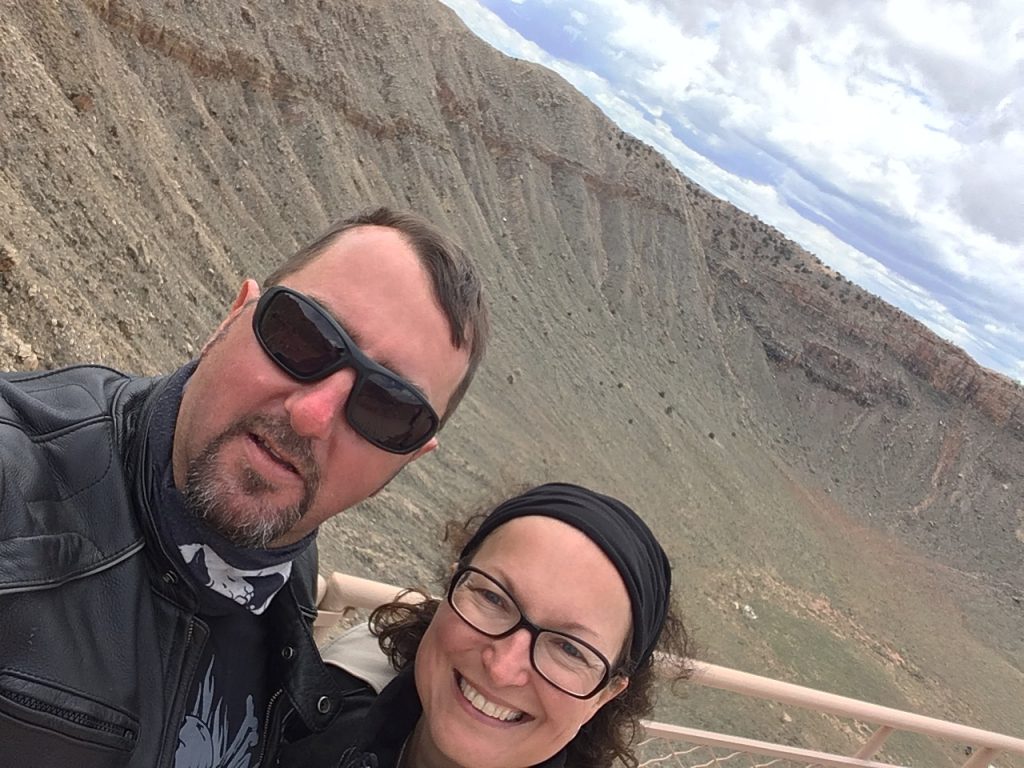
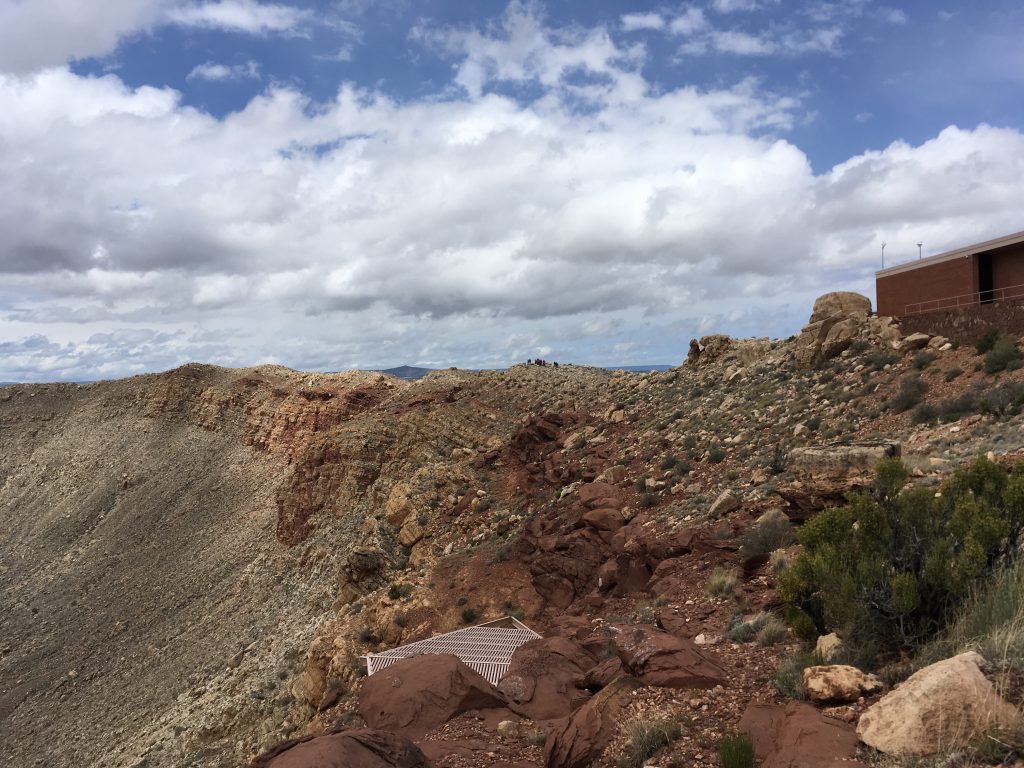
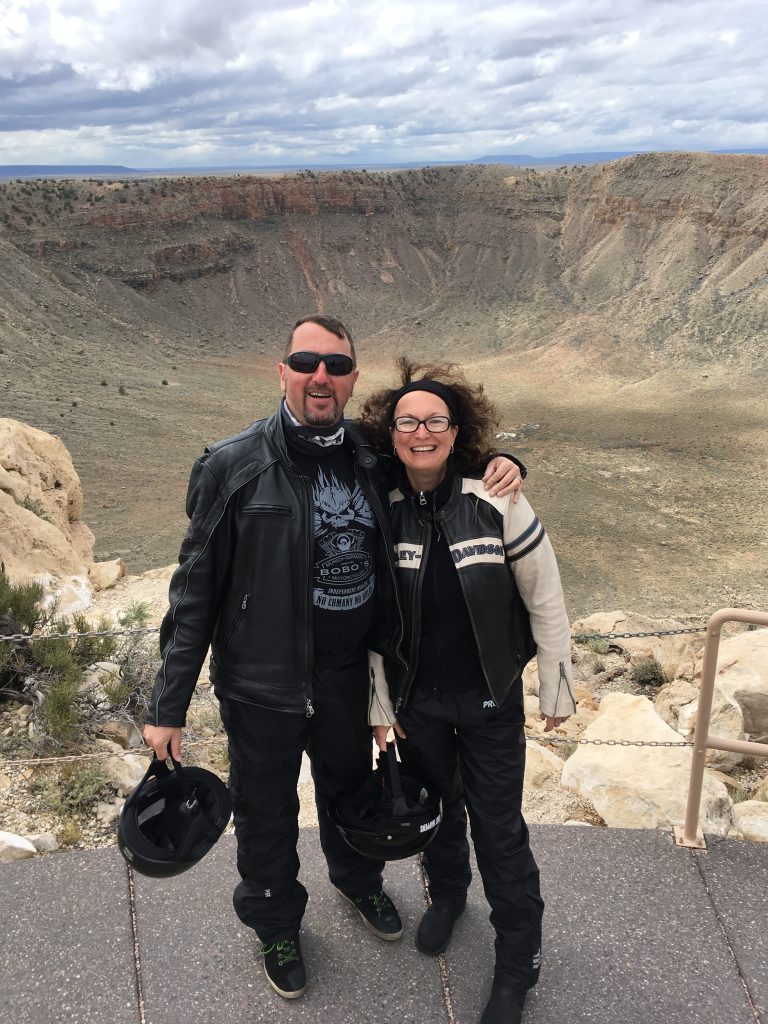
In 1960-es and 70-es the Meteor Crater was one of the sights where NASA astronauts trained to prepare for the Apollo Mission to the Moon, and an actual Apollo test capsule welcomes visitors in front of the main entrance to the facilities (to my disappointment you could not get into the capsule, though…).
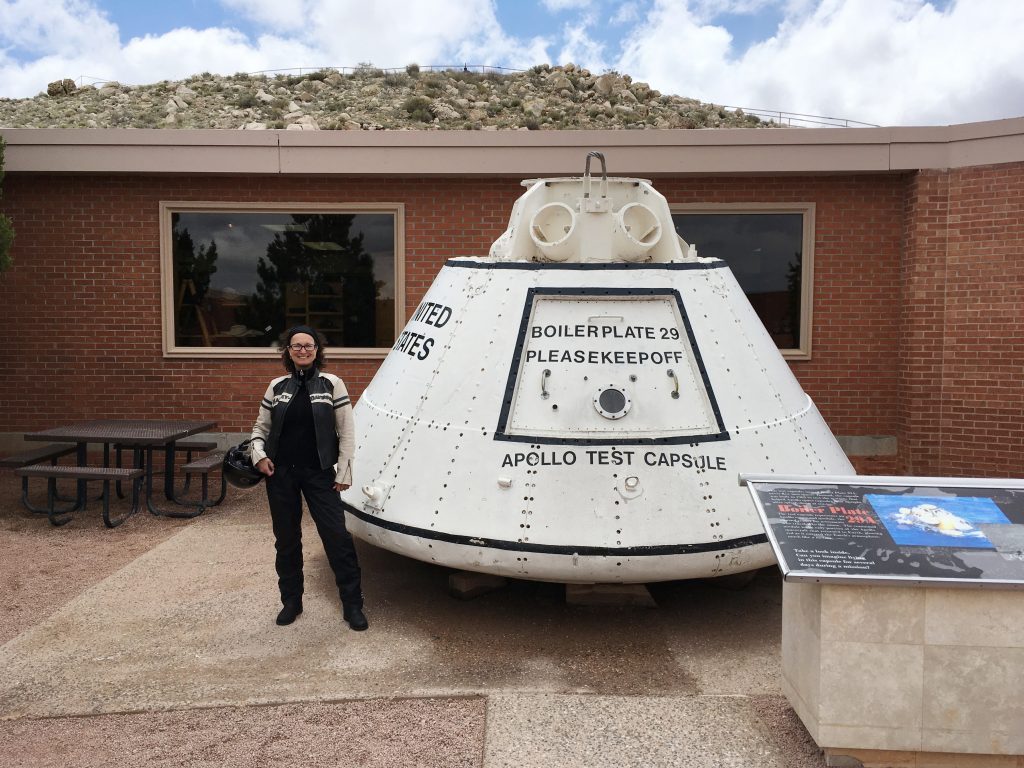
Another interesting fact about the crater, is that it is privately owned. The Crater is managed by the fourth generation of the Barringer family, whose great-grand-father made a smart investment and purchased the land surrounding the crater after no valuable minerals were discovered during excavations on site. The family contributes to the preservation of the Crater and encourages and supports scientific exploration and research within the field of meteoritics. They built a wonderful museum on site, and the place is absolutely worth the $18 admission fee. With all the Meteor Crater has to offer, you can easily spend several hours exploring the place.
Which we would have done, had it not been for the menacing clouds on the horizon that kept following us. Not big fans of being caught in a thunderstorm in the middle of the desert, we regretfully had to cut our visit short, but still spent about an hour admiring the Meteor Crater and increasing our educational levels in the museum.
The Irish luck was with us – despite looking threatening and even throwing a couple of raindrops down, the clouds restrained themselves, and we continued on our way dry and safe.
The Grand Canyon
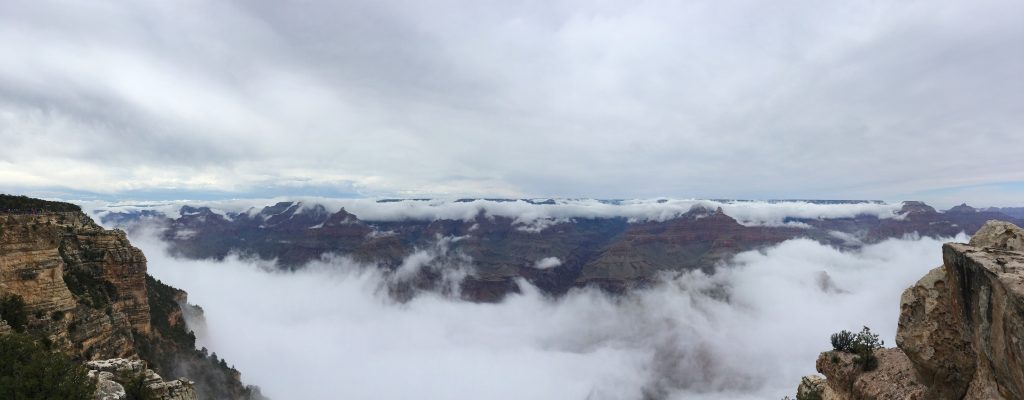
While browsing through the Crater Visitor’s Center extensive gift-shop (as always, exit went directly though it), we had a choice to make – get to the nearby Flagstaff, AZ and call it a day fearing possible rain, or turning North to the Grand Canyon, and doing a quick sightseeing of this natural marvel yet today. On the one hand, the first option would give us more time to admire the Canyon on the following day. On the other hand, we might have better luck today, if it stays dry till the end of the day. The gift shop had free WiFi, and having quickly checked the weather forecast we choose the first option – the rain was about to start by 18:00 in the evening, after which the temperatures on the Canyon rim would drop to below freezing. Ice is the last thing you want to encounter on a motorbike, so considering that it was only midday when we left the Crater, we decided to chance the dash North.
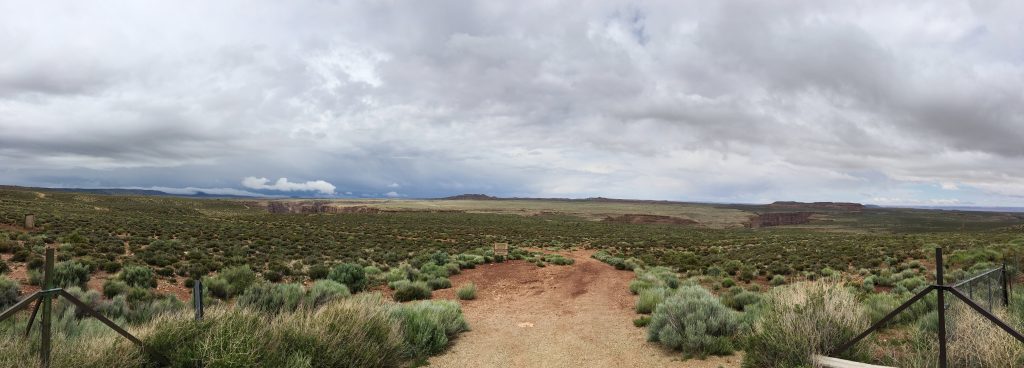
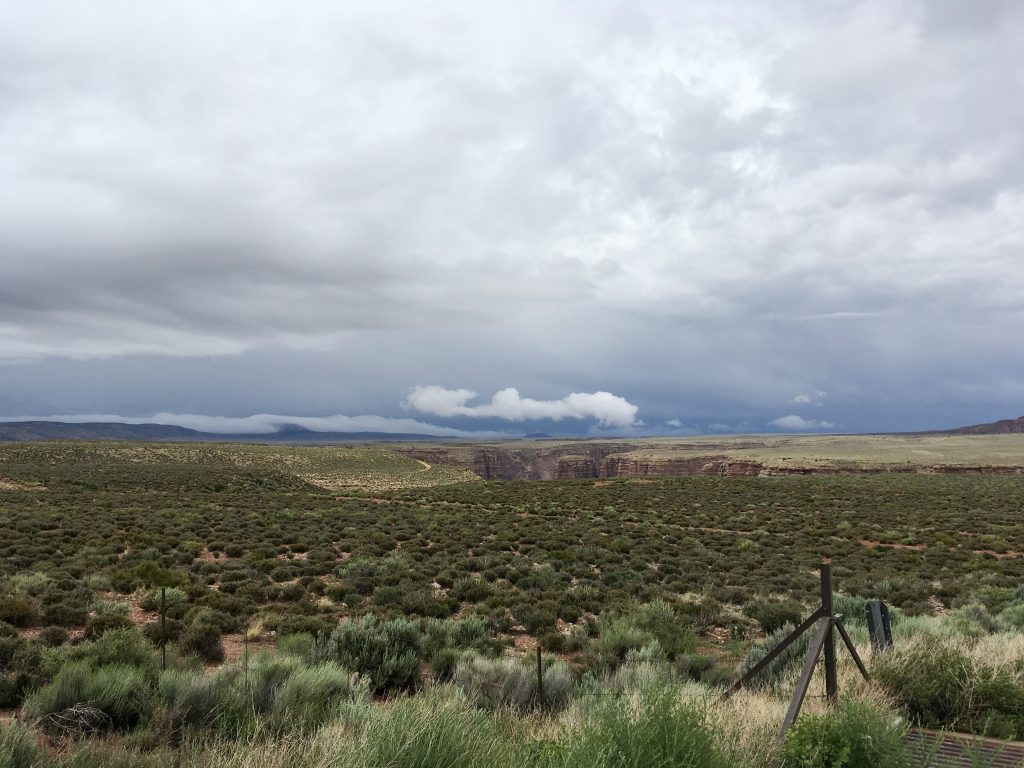
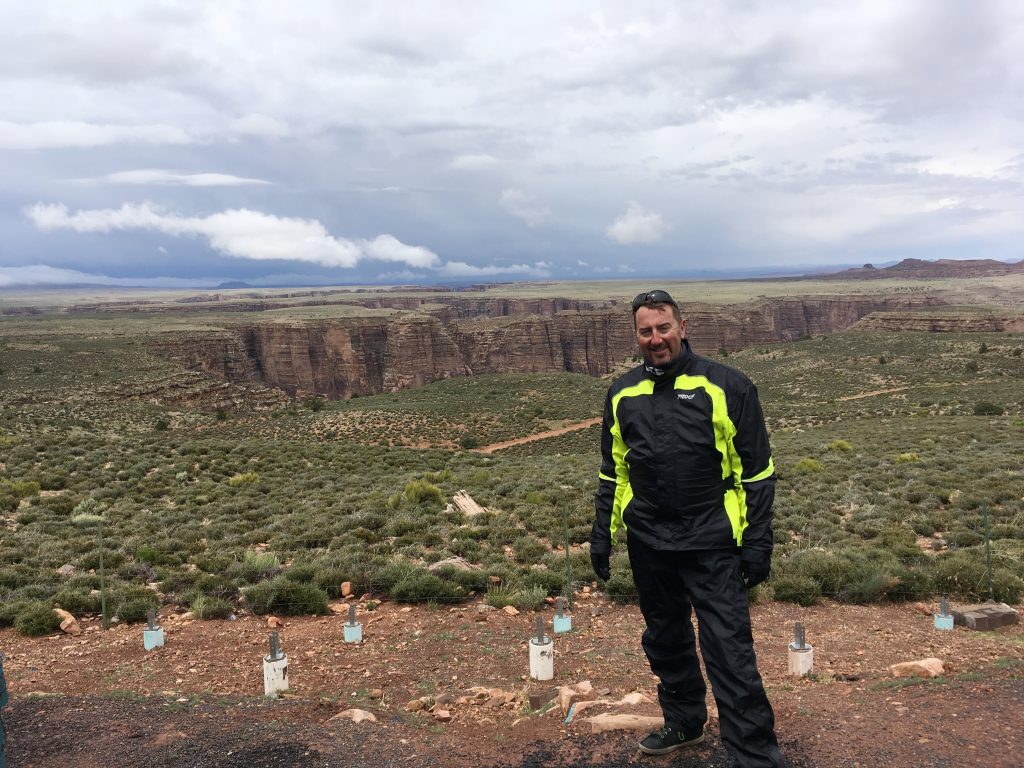
The plan was to turn off I-40 at Winona, before Flagstaff, go North on US-89, and then turn West on old Highway 64 that continued all the way along the South Rim of the Grand Canyon before turning South to Williams, AZ. This was the plan, and we expected to see the Canyon, and reach Williams before the rain came down.
The first (and last) time I experienced the Grand Canyon was in winter, back in December of 2012. With white snow highlighting all possible shades of reds and ochres, the Canyon was majestic and unforgettable. This time I was hoping to see it in spring bloom, which I anticipated should be even more wonderful. Ha-ha!… When in about 2 hours after leaving the Meteor Crater we turned onto Highway 64 and started closing in on the rim, the first snow patches started appearing on the ground. What the fuck????…. This was as far from the spring bloom as it could be…
The road was not frozen, but the snow patches continued to be more and more frequent, until we were riding the gooey mash of snow and water. Soon after turning off the US-89 we rode into a cloud, and had to slow down due to seriously poor visibility. The cloud stretched all the way to the rim, and when we first reached the Desert View Watchtower, there was absolutely zilch to be seen. The tower itself was there, but the rest looked like a huge white cloud soup, resting inside the Canyon. This reminded us of the first encounter with the Cliffs of Moher in Ireland – an impenetrable wall of fog, with no idea what’s behind it.
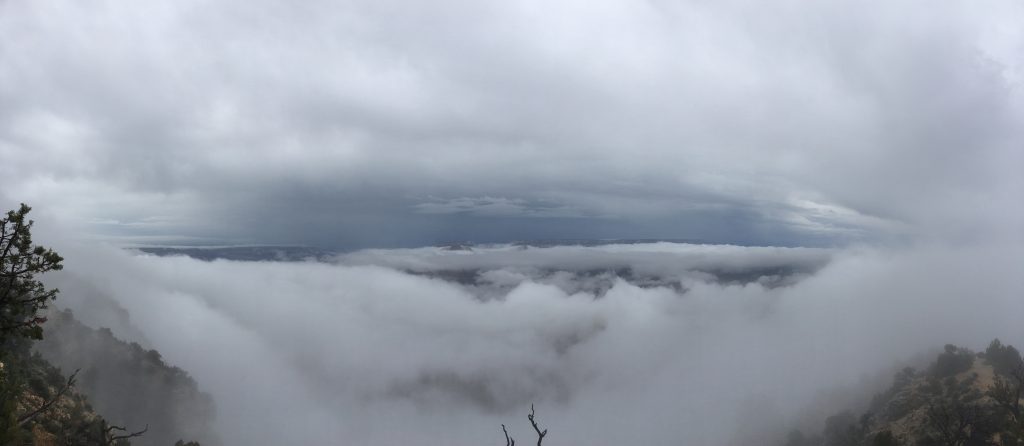
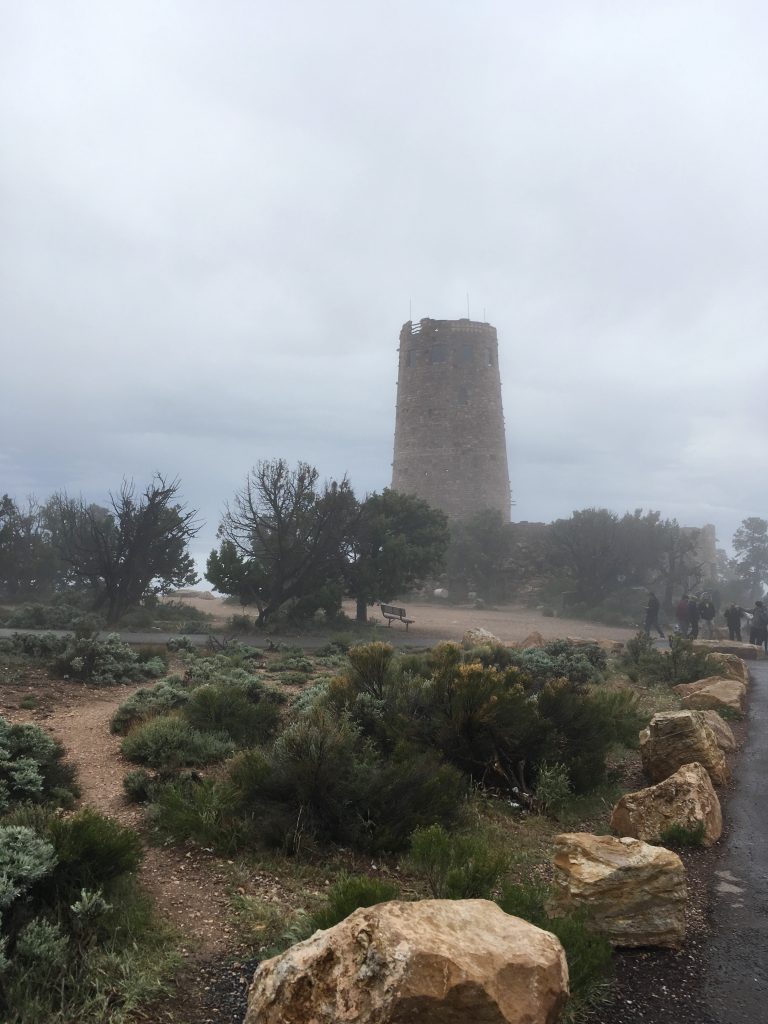
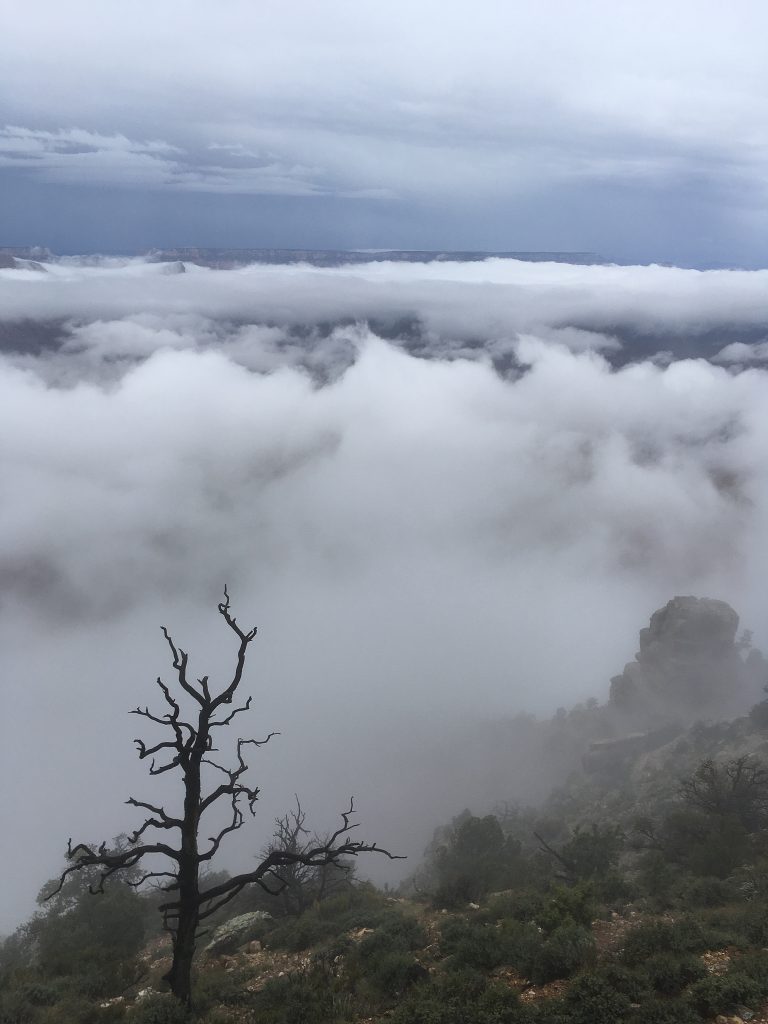
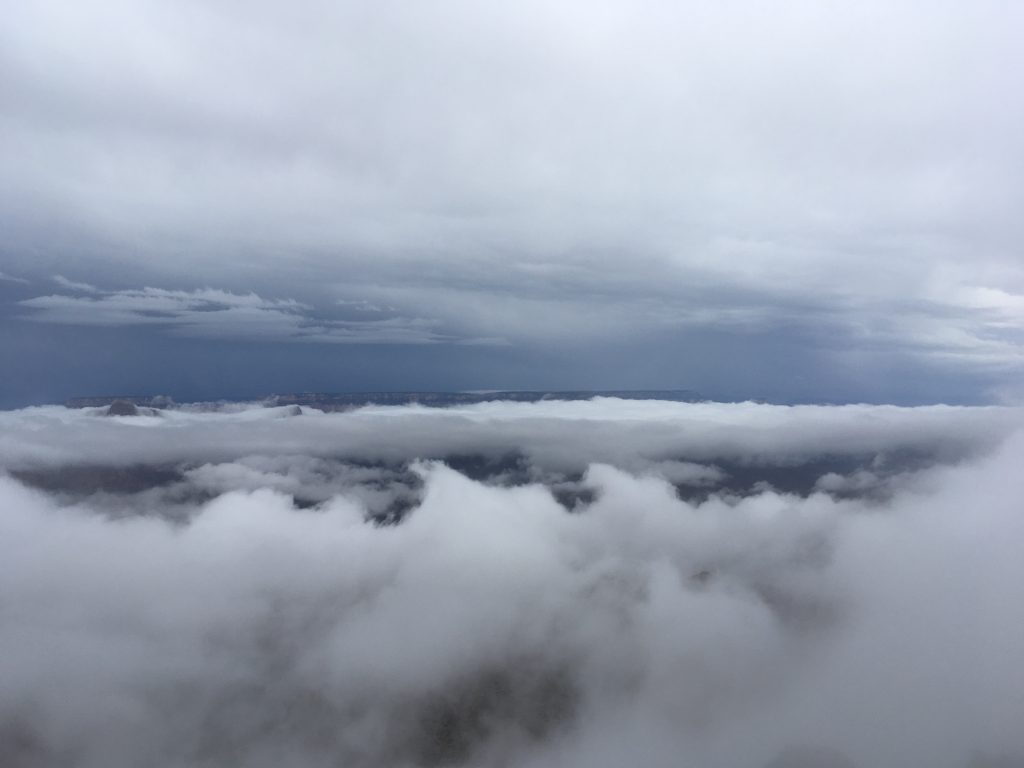
Before getting to the Grand Canyon, Nic confessed that he was under the impression (like so many others), that to see the Canyon you need to get high up, and was being quite skeptical throughout the ride, up until we reached the Watchtower. In fact, ever since we entered Arizona, we already were quite high above the sea level. The mean elevation of Arizona is 1,250 m (4,100 ft) and without noticing this, we continued climbing up as we closed in on the Canyon. The highest point of the South Rim reaches up to 2, 270 m (7,450 ft) at the far eastern end of the South Rim on the spot of the Desert View Watchtower, and the North Rim is even higher, reaching up to 2,400 m (8,000 feet). The gradual climb gives you a deceitful feeling of surprise when you find yourself up close and personal with the Canyon – you did not expect to be as high up as you were, and when looking down into the Canyon (that is, when it is not filled with fog and clouds), you don’t expect the depth.
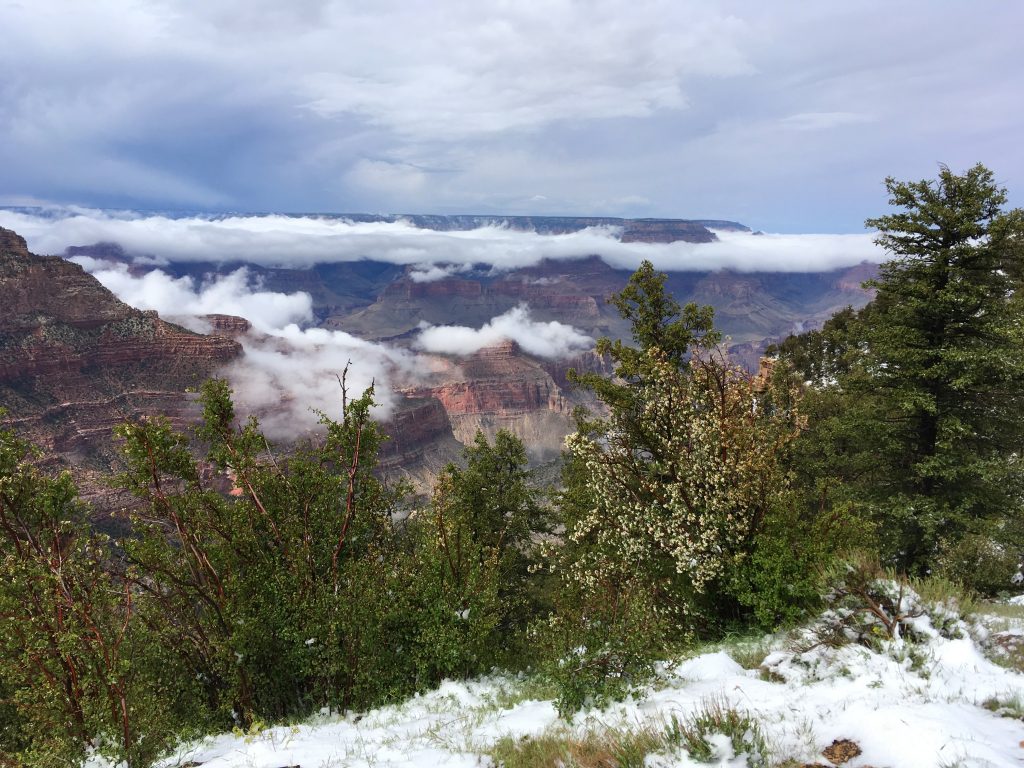
Even enveloped in clouds, the place still looked magnificent. The fog added a mysterious and forbidding feel to the landscape. We took some fog pictures and continued on Highway 64 along the rim at snail pace, with slush sprinkling from under our tires. I was especially terrified, expecting to slip on every minor turn of the road and kill myself with the heavy bike. There was nothing I could do, though, but continue, scared shitless, cursing, sweating and promising myself never to do something like this ever again.
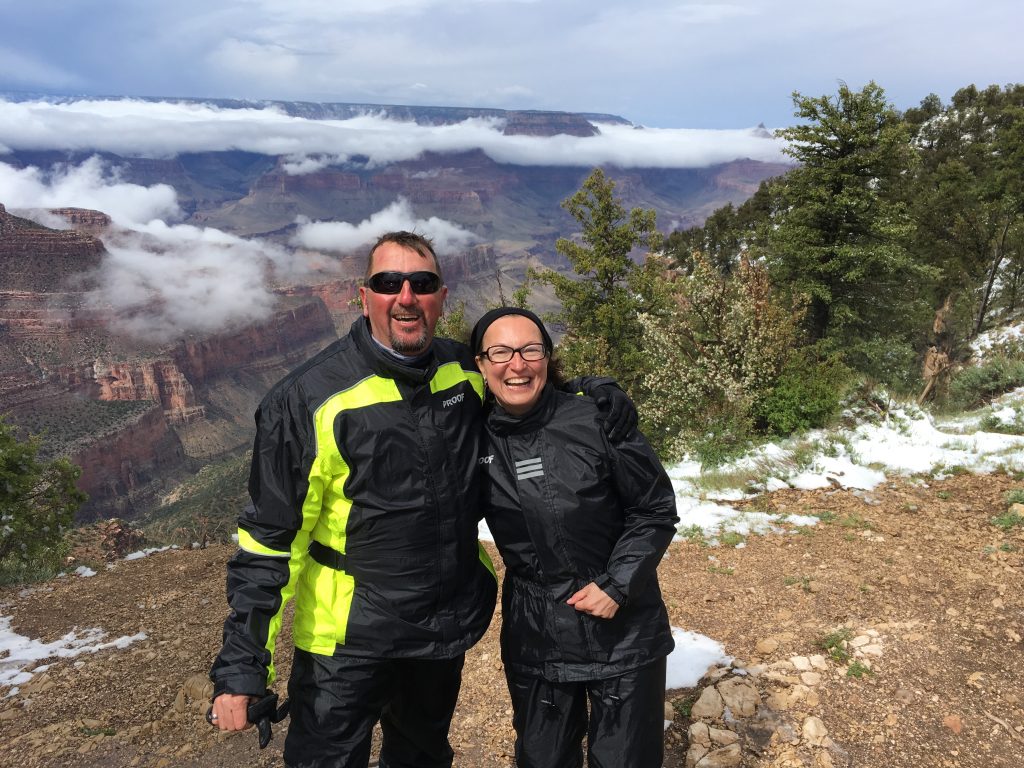
We were at the Grand Canyon, though, so we made it a point to stop at every single vista point on the way. Luckily for us, the clouds thinned out as we progressed on the way, and although the bottom of the Canyon was still nowhere to be seen, the next several vista points offered a breath-taking view of the majestic rock formations. Again, I was seeing the Canyon in snow, but it was honestly too beautiful to complain. The spring bloom will have to wait, I guess… On the plus side, it was not raining!


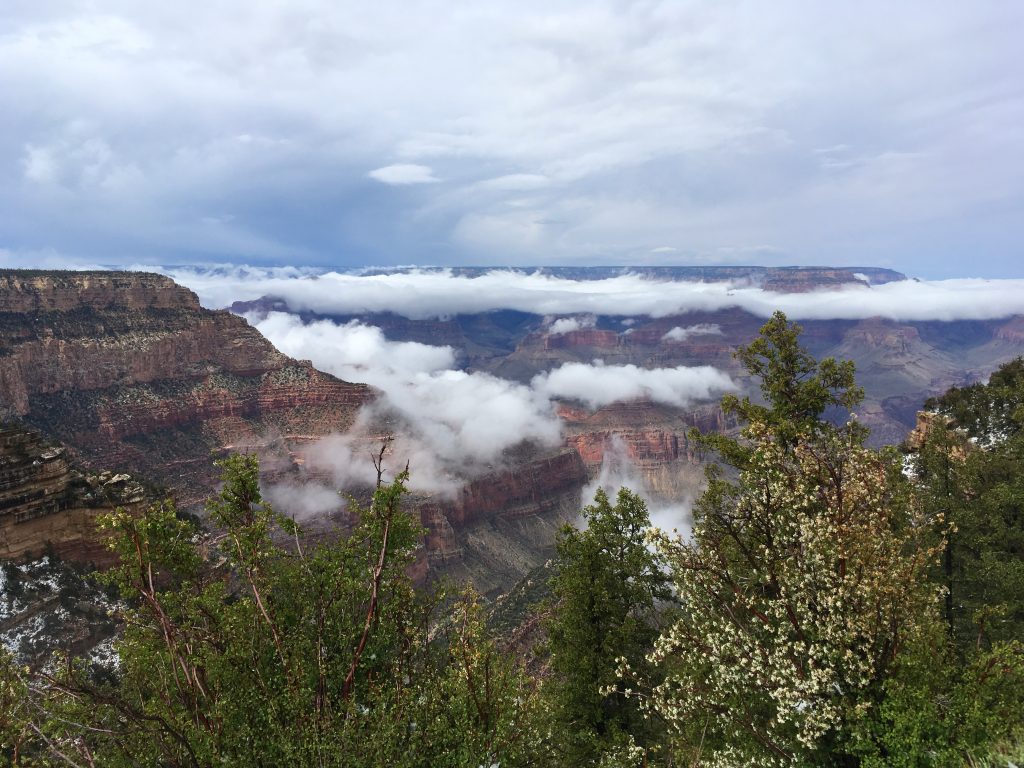
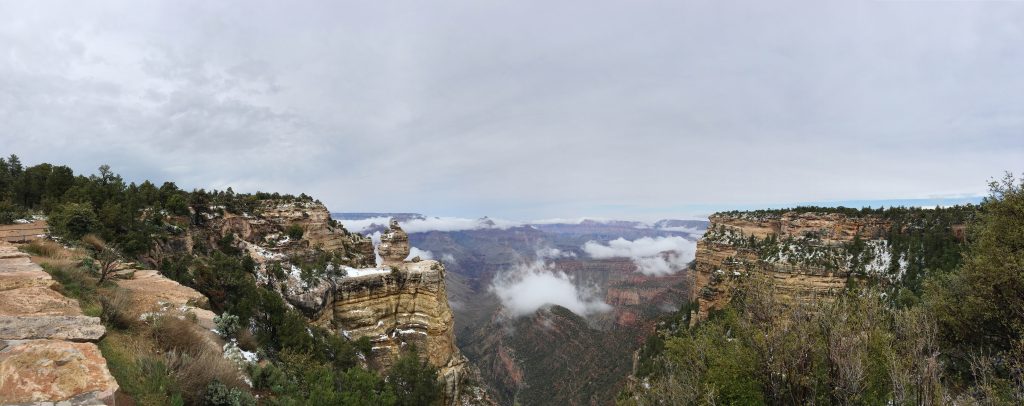
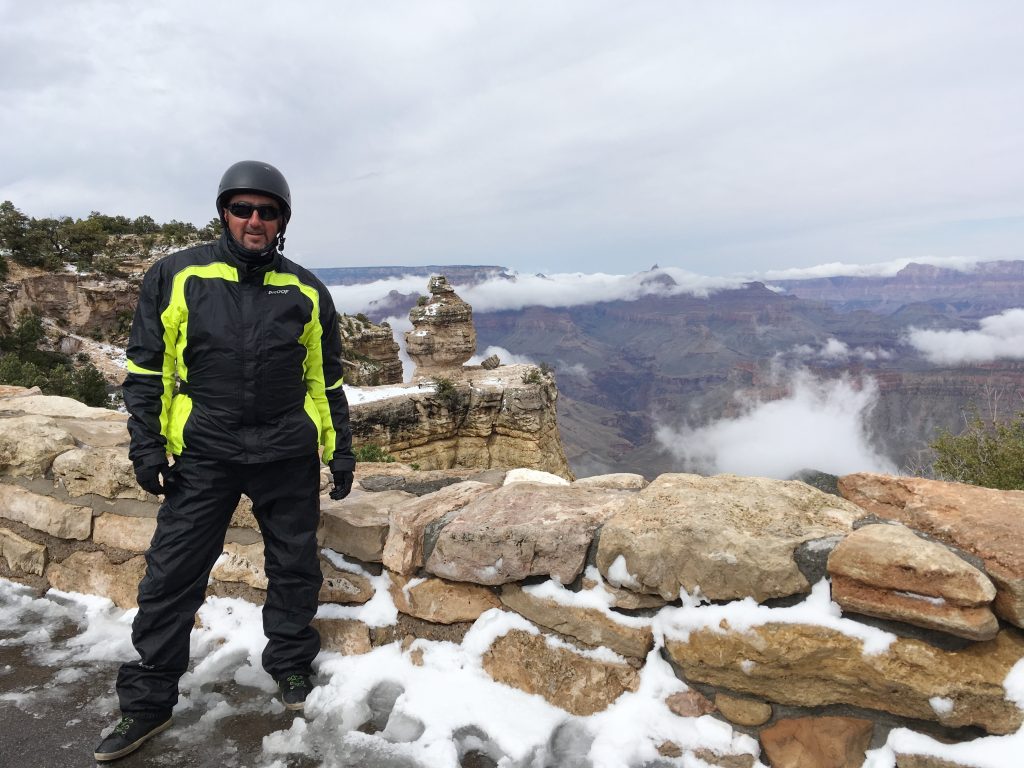
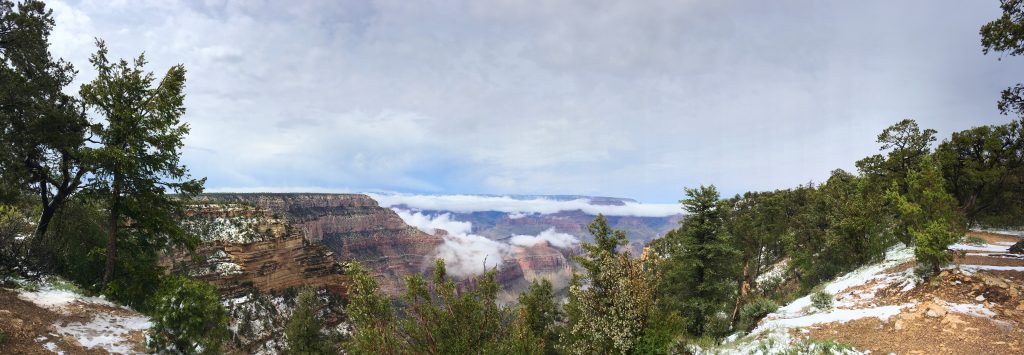
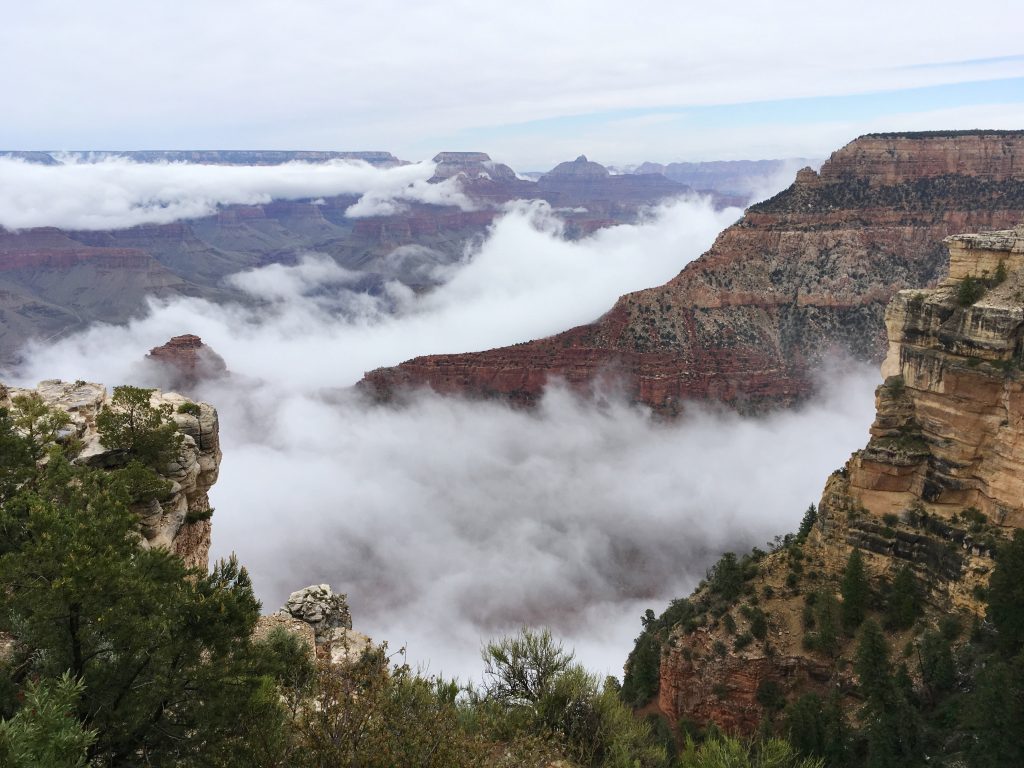
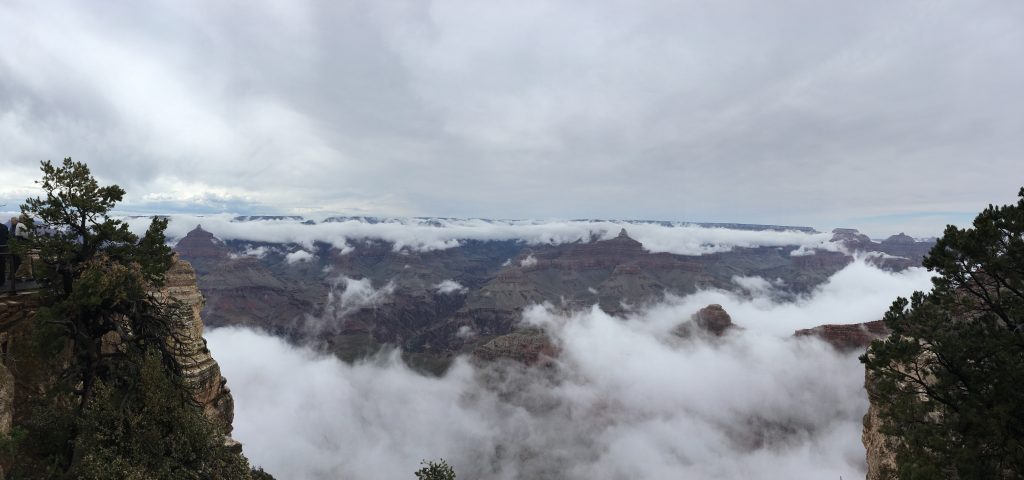
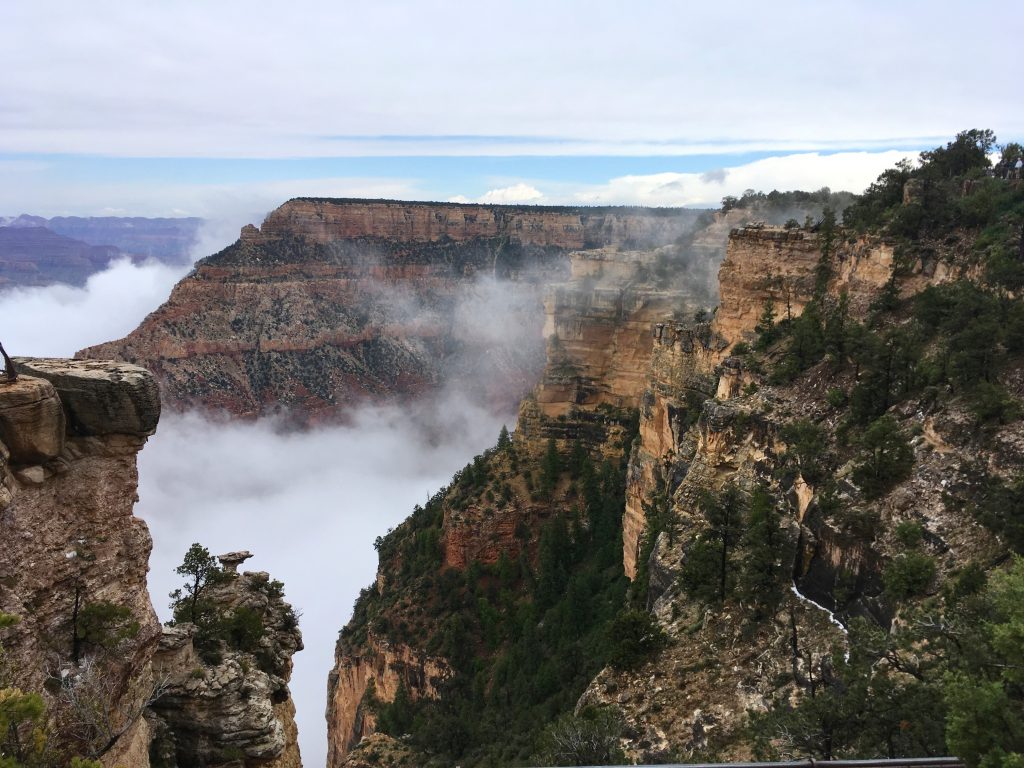
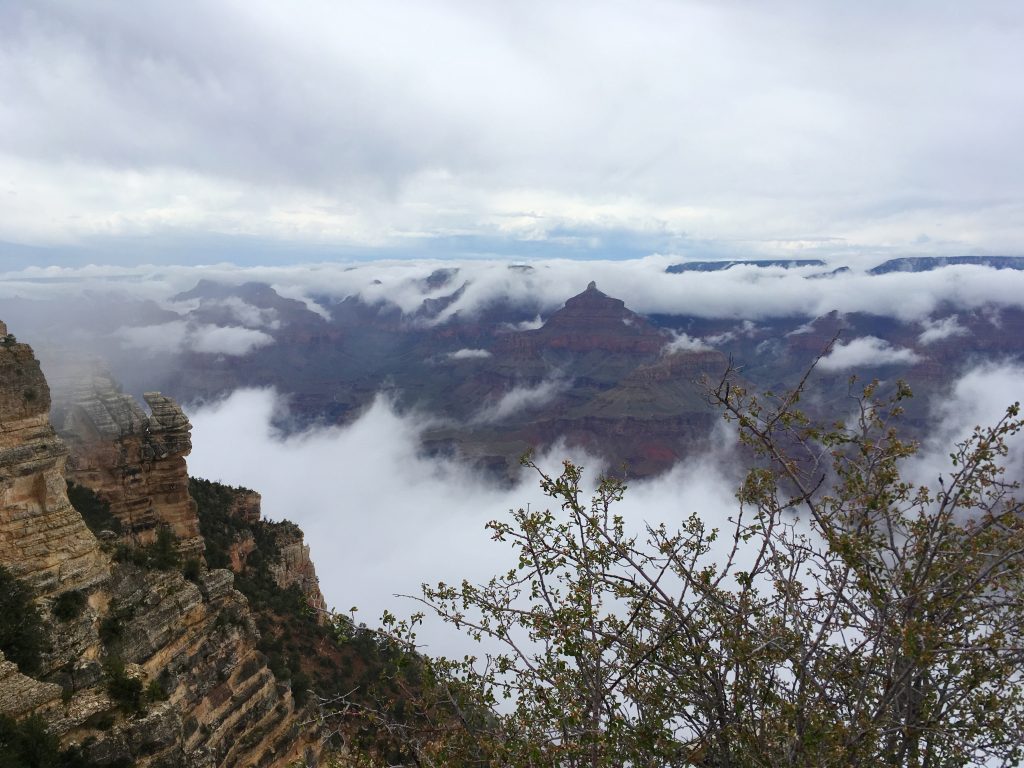
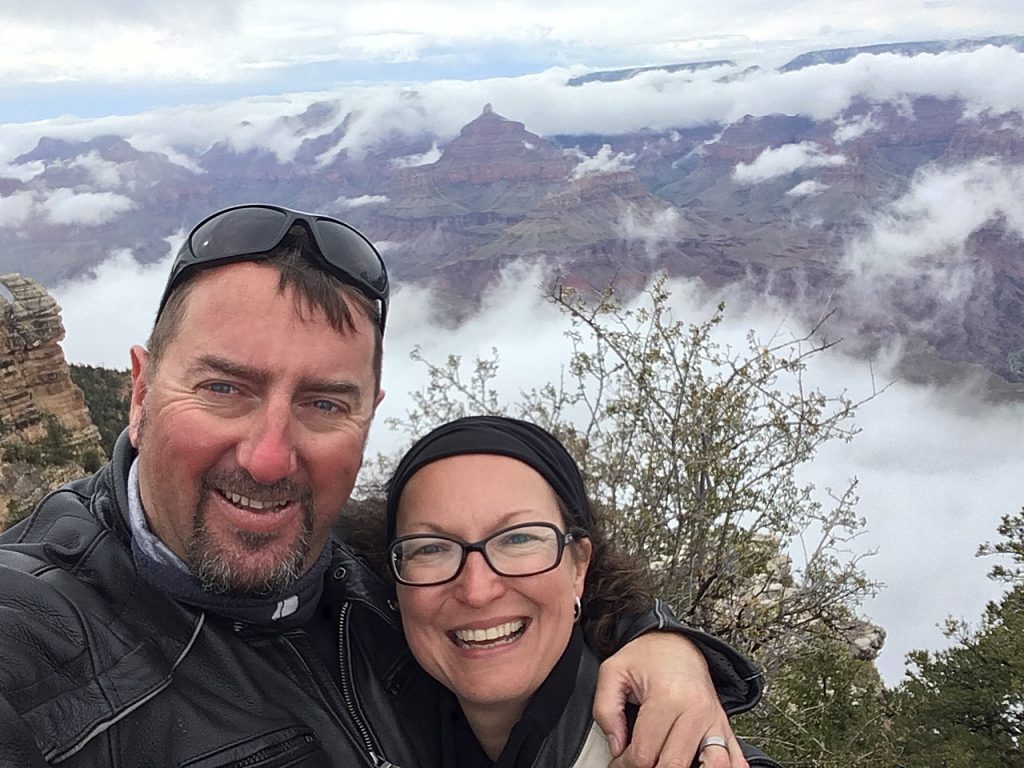
The part of Highway 64 going along the North Rim is about 25 miles long, and under normal circumstances should take about 40 min to ride. In our slow pace in snow, stopping to admire the beauties of nature every 10-15 minutes, it took us almost 2 hours to get from the Desert View Watchtower to the Grand Canyon Village. It was past 4 in the afternoon, and the dusk was starting to settle. We had to tear ourselves away from the Canyon, and turn South, following the highway past Tusayan down to Williams, AZ.
The 60 miles to Williams took us about an hour, and although the snow disappeared from the road, by the time we saw the town, the temperatures dropped seriously, and I was freezing. My teeth were doing the Morse code, and much as I tried to hug the warm bike, I was getting colder and colder. We stopped for gas on the outskirts of Williams, and when I confessed that I did not feel my feet or hands anymore, we rolled into the parking lot of the Day’s Inn next to the gas station, and called it a day. It took 20 minutes in the hot shower to bring me back to resembling a semi-normal human being. If any confirmation was needed – riding in the snow was definitely not for me!
We put on all our available clothes (personally, I was wearing about 10 layers), and walked a couple of steps from the hotel to the nearby Kicks on Route 66 diner. To be fair, walking did not feel as cold as riding the bike, but I was not taking any chances. The cozy diner warmed up our bodies and souls with comfortable temperatures, nice food, and Italian wine. After dinner, I agreed to take 5 layers of clothing off, but slept in the remaining 5. Under the warm duvet.
